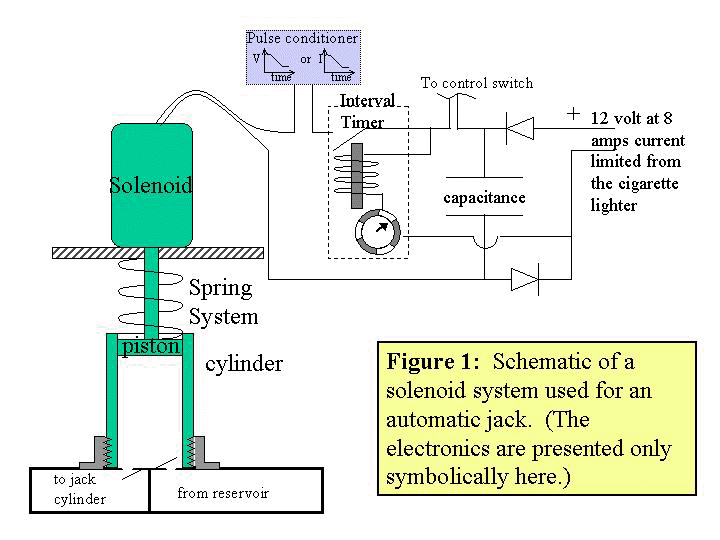
Applications were Solenoids can Advantageously Replace Rotary Motors:
by Gil Baker
I was advising teams of students at Ohio University's Russ College of Mechanical Engineering. Their senior design project was to develop a design and prototype for an automated car jack. This is a jack that can be used by a grandmother. Once the jack is properly placed under the car, only one switch must raise and lower the car. One team was developing a hydraulic jack and they were using a rotary pump to provide a pressurized flow of fluid to the lifting cylinders. I recommend that they replace their rotary pump and motor with a simpler cylinder with check valves and a piston driven by a solenoid. They ignored me. I cannot blame them for desiring to stick with their own ideas, but I started wondering about other applications where solenoids reduce costs by replacing motors.
In this application there are clearly costs advantages to replacing the complex and precision machined parts of a rotary hydraulic pump with a piston and cylinder. However, another question is: can a less expensive linear solenoid replace a rotary motor while providing the same quantity and quality of mechanical power? Motor prices benefit from a much higher production volume than solenoids. Still there is a much larger issue. Most do not know how to efficiently apply a solenoid to a reciprocating scenario like the pumping of a hydraulic cylinder. Most would apply such a solenoid the same way they would apply a solenoid to grab and hold operation as with automatic door locks.
Two additional systems can dramatically increase the efficiently of a solenoid applied to a reciprocating scenario. The most significant efficiency increase is gained for complex, yet inexpensive electronic circuitry. Instead of applying a constant volume to a DC solenoid, the voltage is constantly varied over the time of the stroke. The electronics can also make the most efficient use of the power source. The second system that increases the efficiency of the solenoid application is the auxiliary mechanical system. In most solenoid applications, the auxiliary mechanical system consists only of a single return spring. A slightly more complex system significantly increases efficiency. This article describes typical mechanical and electrical support systems and how to purchase or manufacture optimum solenoid designs to complement them. It also suggests other applications where cost savings can be realized by replacing rotary motors with linear solenoids.

This article will be posted soon.
Copyright � 2004 Redeeming Time Designs Co. All rights reserved.